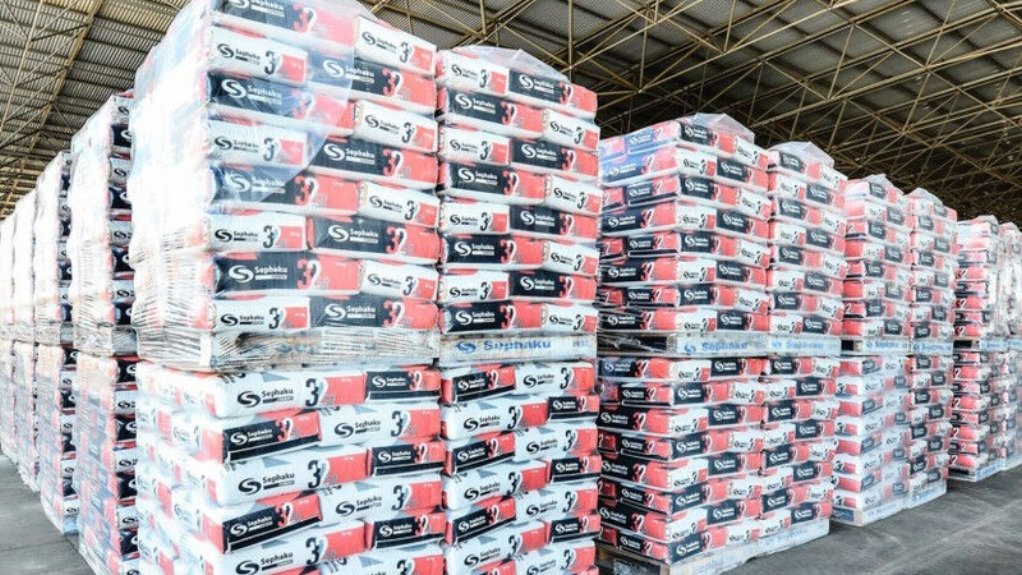Increased competition, challenges facing S African cement sector



COMPLETE TRANSPARENCY Sephaku advises that integrated producers seek complete transparency from port authorities to ascertain the level of compliance when cement is imported
Photo by
INCREASED RISK Cements that fall below the standards proliferate in lower income areas, where cost pressures are the highest
Cement producer Sephaku Cement notes that, over the last 20 years the cement industry has evolved and fragmented, which has, in part, resulted in challenges related to ineffective enforcement of regulation and excess capacity.
The company explains that the cement industry has evolved from four integrated producers to six integrated producers, 11 cement blenders and five or six importers.
Sephaku CEO Duan Claassen notes that, in total, between all entities involved in the selling and distribution of cement in South Africa, there are over 80 different types of cement and/or brands on the market.
“[While] in its own right, this increased fragmentation is a challenge, one could argue that is has created a more competitive environment, which ultimately should benefit the consumer,” elaborates Claassen.
However, he adds that the increased fragmentation brings the first existential threat to the industry, being the ineffective enforcement of regulations and quality standards.
South African cement standards – which mirror the European standards – are well structured and compliance thereto should “always provide comfort” to consumers regarding the quality of the product being purchased.
However, Claassen points out that there are some market participants that violate the regulations by producing cement products that fall significantly below the minimum standard. “These cements proliferate particularly in lower income areas, where the pressure on the purse is at its highest.” He adds that a lack of consumer knowledge on this topic can significantly increase the risk of failures, leading to serious incidents.
The second existential threat is cement imports into a market that has excess capacity.
He explains that the rampant growth and expansion of imported cement at a time when the Rand is at record lows, raises key questions on how imports can flourish.
It should be noted that some imported products are being sold well below the domestic price of cement in the country of origin, which “could be considered dumping”.
Secondly, the rate and ease at which imported cement flows through the country’s highly congested and problematic ports, raises further questions. Imported cement is for a large part aimed at the lower end of the income spectrum, specifically in KwaZulu-Natal.
Further, a significant portion of the imported cement is sold through small outlets, where compliance is complex to ascertain. “The integrated producers should seek complete transparency from the port authorities to ascertain the level of compliance of imported cement, and advise regulators accordingly,” states Claassen.
The third threat is the carbon tax, as cement production is carbon intensive, despite most integrated producers implementing various measures to mitigate the impact of carbon emissions.
He highlights that the “hard-to-abate” nature of cement manufacturing is projected to result in carbon taxes becoming the single largest cost item for several integrated producers – a cost that will ultimately be borne by the consumer.
He notes that the key challenge with carbon tax is that it is not levied on imported cement, so as the years pass, domestic producers will become less competitive in relation to imports.
Claassen stresses that, given the location of limestone reserves, cement companies are often located in rural areas, where unemployment rates and general living standards are dire. Consequently, the industry plays an immense role in the survival of these areas, and any exit, owing to a lack of global competitiveness, would likely be extremely damaging.
Claassen concludes that South Africa could plausibly witness one of its key industries transitioning from a self-sufficient domestic industry, to one almost entirely dependent on imports.
Article Enquiry
Email Article
Save Article
Feedback
To advertise email advertising@creamermedia.co.za or click here
Comments
Press Office
Announcements
What's On
Subscribe to improve your user experience...
Option 1 (equivalent of R125 a month):
Receive a weekly copy of Creamer Media's Engineering News & Mining Weekly magazine
(print copy for those in South Africa and e-magazine for those outside of South Africa)
Receive daily email newsletters
Access to full search results
Access archive of magazine back copies
Access to Projects in Progress
Access to ONE Research Report of your choice in PDF format
Option 2 (equivalent of R375 a month):
All benefits from Option 1
PLUS
Access to Creamer Media's Research Channel Africa for ALL Research Reports, in PDF format, on various industrial and mining sectors
including Electricity; Water; Energy Transition; Hydrogen; Roads, Rail and Ports; Coal; Gold; Platinum; Battery Metals; etc.
Already a subscriber?
Forgotten your password?
Receive weekly copy of Creamer Media's Engineering News & Mining Weekly magazine (print copy for those in South Africa and e-magazine for those outside of South Africa)
➕
Recieve daily email newsletters
➕
Access to full search results
➕
Access archive of magazine back copies
➕
Access to Projects in Progress
➕
Access to ONE Research Report of your choice in PDF format
RESEARCH CHANNEL AFRICA
R4500 (equivalent of R375 a month)
SUBSCRIBEAll benefits from Option 1
➕
Access to Creamer Media's Research Channel Africa for ALL Research Reports on various industrial and mining sectors, in PDF format, including on:
Electricity
➕
Water
➕
Energy Transition
➕
Hydrogen
➕
Roads, Rail and Ports
➕
Coal
➕
Gold
➕
Platinum
➕
Battery Metals
➕
etc.
Receive all benefits from Option 1 or Option 2 delivered to numerous people at your company
➕
Multiple User names and Passwords for simultaneous log-ins
➕
Intranet integration access to all in your organisation
















